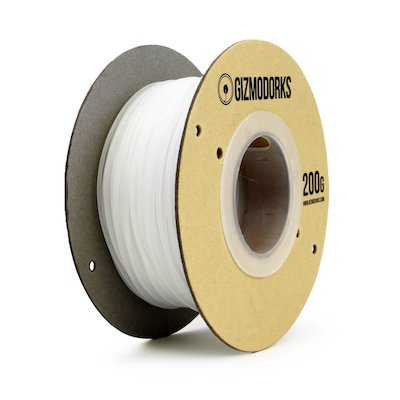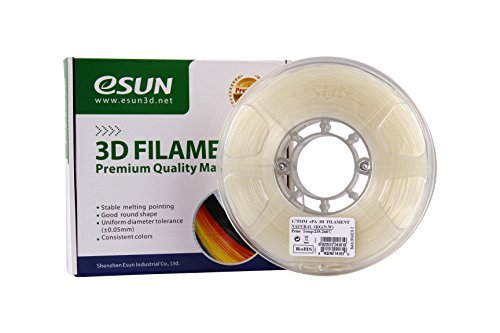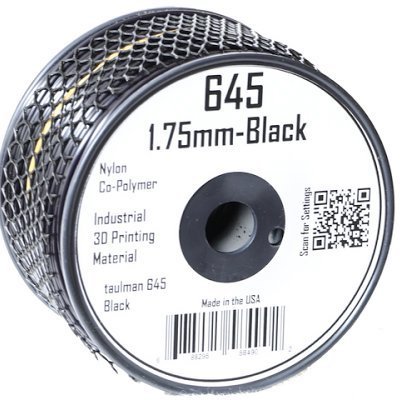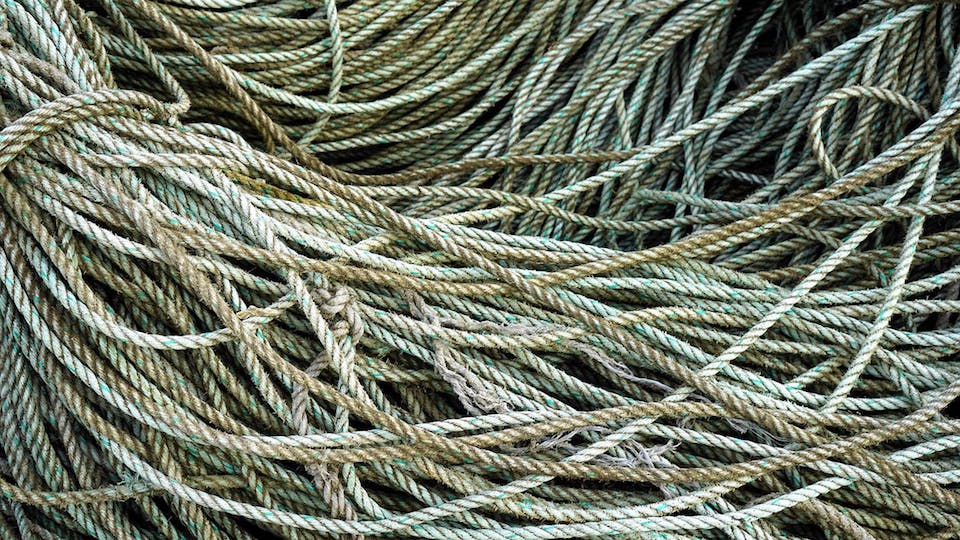Durable Nylon Filament: Properties, How to Use, and Best Brands
Nylon is a fairly common material, and you have probably heard it being used in making ropes or weaved into textiles. But did you know that nylon can also be used in 3D printing? In fact, it’s one of the most versatile and dependable material to make prints out of. In this article, we tell you all about printing using one of our favorite materials.
What is nylon?
Nylon is a generic term for a synthetic copolymer composed of polyamides in a variety of configurations. It is a thermoplastic, meaning it can be melt-processed into various shapes – a property that lends itself beautifully into 3D printing. It was the first commercially successful synthetic thermoplastic copolymer, and one of its earliest applications was in the manufacture of nylon-bristled toothbrushes and women’s stockings (or “nylons”, as they were called at the time). Even today, nylon can be considered as one of the world’s most useful synthetic materials.
The basic form of nylon – known as Nylon-6,6 – was first manufactured and patented at Dupont using amide monomers. Nowadays, several variations of nylon have been developed, such as Nylon 510 and Nylon-1,6. Other nylon variants can also be created by mixing with other additives, such as carbon. A cursory look at variant nylon products nowadays would reveal that the possibilities are practically endless, as nylon variants are available offering different values of hardness, strength, and friction.
What are the benefits of using nylon?
Nylon is well-known for being a strong and lightweight material. As a testament to its strength, it was heavily used to manufacture parachutes, tents, tires, ropes, and other military supplies during wartime only shortly after its discovery. Modern applications of nylon include clothing, reinforcement for car tires, and injection molded mechanical equipment. In addition to being exceptionally strong, nylon is resistant to abrasions and chemical degradation. It is elastic and easy to wash. It also has a low coefficient of friction making it an ideal material for gears and bushings.
In terms of 3D printing, nylon is commonly used when printing parts that need to be durable and need to survive mechanical wear and tear. These are the times when the strength of the more traditional PLA or ABS just won’t cut it. It has an excellent strength to flexibility ratio, resulting in products that are very strong yet have a small bit of flexibility.
Nylon also has excellent layer-to-layer adhesion, which also provides more strength to its prints. It also does not emit any unpleasant odor while printing (but we still recommend printing in a well-ventilated room). Making its applications even more diverse, nylon easily absorbs water making it easier to dye or color.
How do you work with nylon?
There are a number of challenges and requirements in printing with nylon. The first challenge is that you will need to print at very high temperatures of 260 to 280 °C. Take note that not all printers are equipped for temperatures this high. Most printers come with hot ends that use plastics such as PEEK or PTFE. The downside is that these plastics will start to degrade at temperatures above 240 °C, emitting noxious fumes. For this reason, an all metal hot end is necessary when printing using a nylon filament.
Nylon is prone to warping just about as much as ABS, so we recommend printing on a glass bed heated to around 75 °C. Good adhesion with the bed can be obtained by applying a thin layer using a PVA-based glue stick. If this low-cost solution doesn’t work for you, then you cannot go wrong with using adhesion sheets such as those from BuildTak.
To reduce the risk of warping, we do not recommend using a cooling fan during printing. You can also prevent drafts or avoid printing in a cool room to get best results. To take it a step further, you may use a heated chamber or enclosure maintained at a temperature of about 45 °C.
Nylon can be printed at relatively high speed settings. We recommend a setting of 30mm/s to 60 mm/s.
One important thing to remember when working with nylon is that it is an extremely hygroscopic material. This means that it can readily absorb moisture from the air. Printing with a filament that has not been dried will result in evaporation of water during extrusion, which will tend to leave cavities or air bubblies in the print. This will prevent layer adhesion, weaken the product, and make the print not quite as good-looking.
To make sure that you are working with a dry nylon filament, we recommend drying it for 2 hours in an oven prior to use. If you need to store the filament, you will need to use an air-tight container and store it with a few dessicant pouches.
Another thing to remember when storing nylon filaments is that nylon can degrade over time. Most nylon products have a shelf life of only 12 months before they start to deteriorate in quality.
What are the drawbacks to using nylon?
As with alternative 3D printing materials, working with nylon can be quite tricky. We have already mentioned that not all 3D printers are equipped to deliver the printing temperatures that nylon filaments require. If you are unsure if your particular model is made to print with nylon, it is best to ask your manufacturer.
The hygroscopic property of nylon means that you might need to buy a few additional accessories to properly handle and store your filament. Printing in moist and humid environments, such as in temperate countries, can also be quite challenging. Perhaps you will need to invest on a dedicated filament dryer, which will be another added expense.
Prints made from nylon are prone to warping and shrinkage, so they might not be as accurate as you desire. The ideal solution to reduce warping is to use a heated chamber or enclosure while printing.
What are the best brands of nylon filaments?
The market for 3D printing nylon filaments is not quite as wide as those of other alternative filaments, so the choices can be quite limited. Given that, the best brands of nylon filaments available in the market today are as follows.

Gizmo Dorks is a well-known brand of 3D printing filaments, and their nylon filaments is available in both 1.75mm and 3.00 mm sizes. The spools are quite small at only 200g, making it perfect for those who want to experiment with using nylon for their prints.

eSun has their own brand of nylon filaments that are available in 1kg spools. The filaments are in 1.75mm size and have a natural semi-transparent look.
For more heavy-duty applications, the carbon fiber filled nylon filament from eSun may be exactly what you need. By combining carbon and nylon, more stable and rigid prints can be created. Prints made from carbon fiber filled nylon also have less tendency to warp, resulting in better quality prints. The carbon fiber filled nylon filaments are available in both 0.5kg and 1kg spools, and at a size of 1.75mm.

The Nylon 645 filament from Taulman was especially designed to be used for 3D printing. With improved adhesion, reduced water absorption, and increased dye absorption, this filament product provides all the advantages you will need to make high-quality prints. The Taulman Nylon 645 filament is available at 1lb spools and at a size of 1.75mm. This product is available in both black and natural colors.
The Taulman Bridge filament is another custom-designed filament from Taulman which acts as a ”bridge” product between Nylon 645 and other filaments in the market. It is more affordable but still delivers very high tensile strength, improved adhesion, and reduced water uptake. The Bridge filament is available in both black and natural colors, in 1lb spools, and at a size of 1.75mm.
The Roundup
| Material | Nylon |
| Applications | – Mechanical parts and equipment – Rope – Woven into textiles – Reinforcements for car tires |
| Properties | – Extremely durable – Excellent strength to flexibility ratio – Good layer adhesion – Resistant to abrasions – Resistant to chemicals – Low coefficient of friction – High moisture uptake – Can be easily colored or dyed |
| Recommended printing temperature | 260 to 280 °C |
| Recommended bed temperature | 75 °C |
| Heated chamber | Recommended; maintain at 45 °C |
| Printing speed | 30mm/s to 60mm/s |
| Adhesion | Thin layer of PVA-based glue stick (such as Elmer’s) or BuildTak adhesion sheets |
| Cooling | No cooling fan needed; if possible, print in a room with no draft or any cooling |
Nylon is a favorite material for many 3D printing enthusiasts, and for a good reason. It is extremely versatile, and the durability of its prints is matched by no other plastic. With the strengths nylon has exhibited in the field of 3D printing, it’s a safe bet that it will remain one of the most useful synthetic materials in the world. If you have been trying to make a durable print, and other materials are just not doing it for you, then we are telling you right now: nylon is the answer. It may be rough using it at the start, but we’re sure it will also be one of your favorite materials after a while.




Interesting article. We are creating new PA materials. Ours have chain lengths from c4-c18 giving our PAs unique properties. I am looking for experts in this space to discuss the details further.